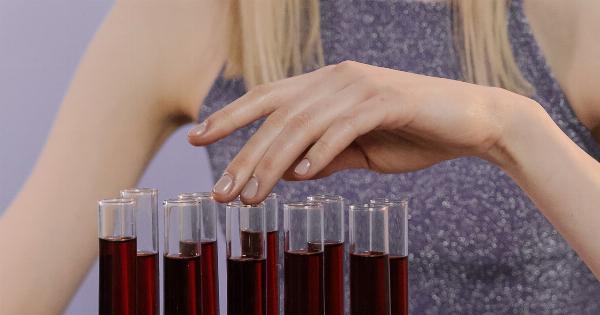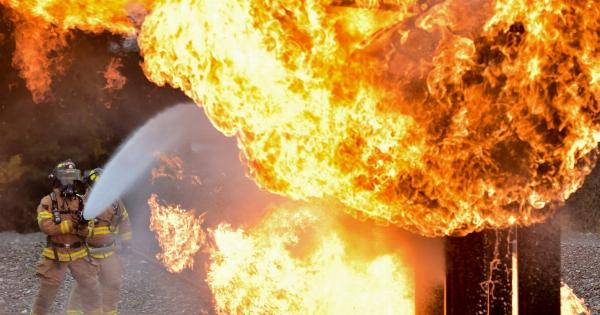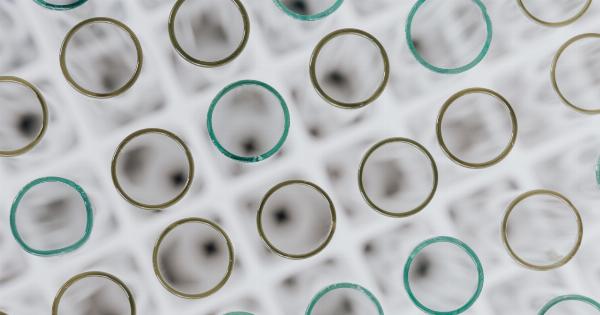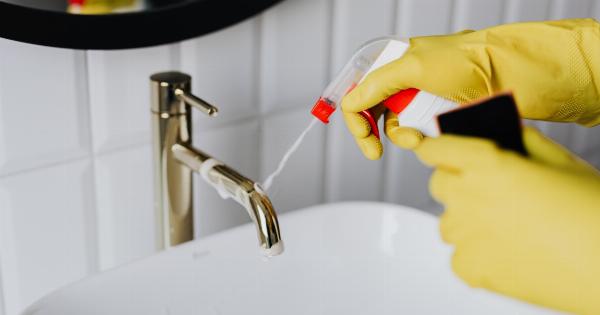A chemical burn occurs when the skin or eyes come into contact with a harmful substance. This can happen at home, in the workplace, or in industrial settings.
Chemical burns can range from mild to severe, and it’s important to know how to manage them to minimize damage and promote healing. In this article, we will discuss the various types of chemical burns, their causes, and effective management strategies.
Types of Chemical Burns
Chemical burns can be divided into three categories based on the substances that cause them:.
1. Acids
Acids are corrosive substances that can cause severe damage to the skin and eyes. Common acid examples include sulfuric acid, hydrochloric acid, and nitric acid.
Acid burns typically result in coagulative necrosis, where the affected tissues turn firm and leathery.
2. Bases
Bases, also known as alkaline substances, are equally harmful to the skin and eyes. Examples include sodium hydroxide, calcium hydroxide, and potassium hydroxide. Base burns often cause liquefactive necrosis, which results in tissue dissolution.
3. Irritants
Irritants are less severe than acids and bases but can still cause considerable damage. These substances include household cleaners, certain solvents, and some personal care products.
Irritant burns can vary in severity depending on the concentration and duration of exposure.
Causes of Chemical Burns
Chemical burns can occur due to various reasons, such as:.
1. Accidental Contact
The most common cause of chemical burns is accidental contact with harmful substances. This can happen at home while cleaning or handling certain products, as well as in workplaces where chemical agents are used.
2. Workplace Accidents
Chemical burns are particularly prevalent in certain industries, such as manufacturing, construction, and laboratories. Lack of proper safety measures or employee negligence can lead to accidents resulting in chemical burns.
3. Chemical Spills
Spilling chemicals, especially in concentrated forms, can lead to chemical burns. These incidents commonly occur in industrial settings or during transportation of hazardous materials.
Management of Chemical Burns
When dealing with chemical burns, it is crucial to follow these steps:.
1. Remove the Source
The first step is to remove the source of the burn. If the chemical is still in contact with the skin or eyes, carefully rinse the affected area with water to flush out as much of the chemical as possible.
Ensure that you are not putting yourself at risk during this process.
2. Assess the Severity
Once the chemical is removed, assess the severity of the burn. Chemical burns are typically classified into three levels:.
a. First-Degree Burns
First-degree burns are superficial and only affect the outer layer of the skin. Symptoms include redness, pain, and mild swelling. These burns can usually be managed at home with basic first aid.
b. Second-Degree Burns
Second-degree burns affect both the outer layer and the underlying layer of the skin. Symptoms include redness, blisters, severe pain, and swelling. Seeking medical attention is essential for second-degree burns.
c. Third-Degree Burns
Third-degree burns are the most severe and penetrate all layers of the skin. The burned area may appear white, black, or charred, and there may be little or no pain due to nerve damage. Third-degree burns require immediate medical attention.
3. Basic First Aid for Mild Burns
If the chemical burn is deemed mild, you can provide basic first aid at home:.
a. Rinse the Affected Area
Run cool water over the burn for approximately 10 minutes. Avoid using ice or very cold water, as this can further damage the already compromised skin.
b. Gently Cleanse the Wound
Use mild soap and water to gently cleanse the burned area. Do not scrub the wound or apply any harsh chemicals.
c. Apply an Antibiotic Ointment
After patting the burn dry, apply a thin layer of antibiotic ointment to prevent infection. Avoid using ointments containing substances that could potentially react with the residual chemicals on the skin.
4. Seek Immediate Medical Attention for Moderate to Severe Burns
If the burn is moderate to severe, it is crucial to seek immediate medical attention. While waiting for professional help:.
a. Do Not Pop Blisters
Leave any blisters intact, as they provide a protective barrier against infection.
b. Cover the Burn
Use a sterile, non-stick dressing to cover the burn without applying pressure. This will shield the injured area from dirt and airborne contaminants.
c. Minimize Pain and Swelling
Elevate the injured body part to reduce swelling, and take over-the-counter pain relievers as directed.
5. Surgical Interventions
In severe cases, surgical interventions may be necessary to remove damaged tissues, promote healing, and prevent complications such as contractures or deformities.
Preventing Chemical Burns
While accidents can happen, there are measures you can take to prevent chemical burns:.
1. Wear Protective Gear
When handling or working with hazardous chemicals, always wear appropriate protective gear, such as gloves, goggles, and aprons. This will minimize the risk of exposure to the skin and eyes.
2. Read Labels and Instructions
Before using any chemical product, carefully read the labels and instructions. Follow the recommended safety precautions and use the product in a well-ventilated area if indicated.
3. Store Chemicals Properly
Ensure that all chemicals are stored in their original containers, tightly sealed, and out of reach of children. Never store incompatible chemicals together, as they may react and cause dangerous situations.
4. Implement Safety Measures
In workplaces where chemicals are used, proper safety measures should be implemented. This includes providing appropriate training, maintaining safety equipment, and conducting regular risk assessments.
Conclusion
Chemical burns can be serious injuries that require prompt and appropriate management. Whether the burn is mild or severe, it’s essential to take immediate action to minimize damage and potentially life-threatening complications.
By understanding the types of chemical burns, their causes, and implementing preventive measures, we can reduce the risk of these accidents and promote a safer environment for everyone.




























